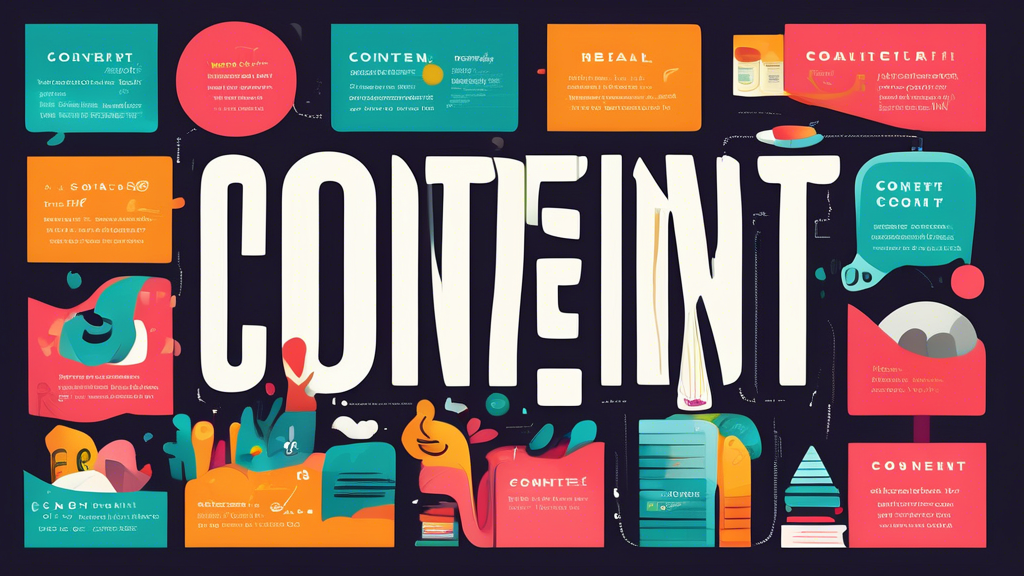How to Use ‘Content’ in a Sentence Effectively
The word ‘content’ is a versatile term in the English language, with multiple definitions that can enrich your writing when used correctly. Whether you are crafting an essay, composing a marketing pitch, or simply aiming to improve your everyday communication, mastering the different uses of ‘content’ can significantly enhance your sentence construction. In this guide, we will delve into the varied meanings of ‘content’, present practical tips for its effective usage, and highlight common pitfalls to avoid. By understanding how to use ‘content’ in a sentence effectively, you can elevate the clarity, precision, and impact of your language.
Understanding the Different Meanings of ‘Content’
To effectively use ‘content’ in a sentence, it is essential to understand its diverse meanings. The term can function as both a noun and an adjective, each carrying distinct connotations and applications. As a noun, ‘content’ generally refers to the information or material contained within something, such as a document, website, or presentation. Conversely, when used as an adjective, ‘content’ denotes a state of satisfaction or happiness. Recognizing these differences will enable you to choose the right form based on your intended message.
Understanding the Different Meanings of ‘Content’
The word ‘content’ can be somewhat tricky due to its versatility and wide range of meanings. To use ‘content’ in a sentence effectively, it is essential first to understand the different contexts in which this word can be employed. Broadly, ‘content’ can function as both a noun and an adjective, each conveying distinct meanings. Here, we will explore these definitions and provide practical examples to elucidate how ‘content’ operates in different scenarios.
‘Content’ as a Noun
When ‘content’ is used as a noun, it generally refers to information or material found within something. This can range from the information within a book, website, or any other medium. Example sentences include:
- The content of the book was enlightening and informative.
- Please review the content on our website to learn more about our services.
- The teacher asked us to summarize the content of the lecture.
In these instances, ‘content’ denotes the information or subject matter contained within the respective medium—a book, website, or a lecture. It can encompass text, images, videos, and other forms of data.
‘Content’ as an Adjective
When ‘content’ is used as an adjective, it expresses a state of satisfaction or happiness. This iteration of ‘content’ is pronounced differently (kuhn-TENT) and refers to a feeling or state of being rather than informational material. Example sentences include:
- She felt content after completing her assignment.
- He was content with the results of his hard work.
- They lived a content life in the peaceful countryside.
In these examples, ‘content’ as an adjective describes an emotional state where an individual is satisfied or pleased, differentiating it clearly from its noun form.
Combining Both Forms in a Sentence
It is also possible to construct sentences that incorporate both the noun and adjective forms of ‘content’ to enrich the meaning or provide contrast. For example:
- The content of the article made her feel content.
- He was content with the content uploaded to his channel.
In each of these sentences, the first ‘content’ functions as a noun (information or material), whereas the second ‘content’ acts as an adjective (satisfied or pleased). This dual usage showcases the versatility of the word ‘content’ and emphasizes the importance of context in interpreting its meaning.
The Importance of Context
Understanding the dual nature of ‘content’ ensures that it is used accurately and effectively in written and spoken communication. Recognizing the context—whether discussing information or expressing satisfaction—will allow you to make appropriate word choices and construct coherent, meaningful sentences. This multifaceted understanding is crucial for writers, educators, and anyone looking to convey their thoughts clearly and accurately using ‘content’ in a sentence.
In summary, mastering the different meanings of ‘content’ as both a noun and an adjective, supported by relevant examples, will significantly enhance your linguistic proficiency. This foundational knowledge sets the stage for more advanced applications, such as choosing the right form in varying contexts, adhering to proper sentence structures, and avoiding common mistakes—topics we will delve into further in the following sections.
Practical Tips for Using ‘Content’ in a Sentence
How to Choose the Right Form of ‘Content’ Based on Context
To use ‘content’ effectively in a sentence, it is crucial to understand the context and select the appropriate form of the word. Depending on whether you mean ‘content’ as a noun, referring to information or material, or as an adjective, meaning satisfied or pleased, will drastically alter your sentence structure and meaning.
As a noun, ‘content’ often relates to the materials or information contained within something. For example, The content of the book was very informative. Here, ‘content’ refers to the information within the book.
As an adjective, ‘content’ describes a state of satisfaction or happiness. For example, She felt content with her life. In this case, ‘content’ is describing the feeling of satisfaction.
Sentence Structure and Grammar Rules for ‘Content’ as a Noun
When using ‘content’ as a noun, it is typically paired with a subject and verb to describe what is contained within something. For example:
- The content of the email was confidential.
In this sentence, ‘content’ is the noun that is the object of the verb ‘was,’ describing what is in the email.
Another structure involves using ‘content’ with modifiers and additional information:
- The detailed content provided in the report was very helpful for the project.
Here, ‘content’ is modified by the adjective ‘detailed,’ and the sentence gives more information about what kind of content it is referring to.
Sentence Structure and Grammar Rules for ‘Content’ as an Adjective
When using ‘content’ as an adjective, it should describe a noun and usually follows a linking verb such as ‘feel,’ ‘seem,’ or ‘be.’ For example:
- He felt content with the outcome of the meeting.
In this sentence, ‘content’ is an adjective describing the state of being of ‘he,’ and it follows the verb ‘felt.’
Another structure can involve using ‘content’ in comparative forms or in conjunction with adverbs:
- She was more content after receiving the promotion.
In this sentence, ‘more’ modifies ‘content,’ showing a comparative sense.
By adhering to these practical tips and understanding sentence structure rules, you can ensure that you use ‘content’ effectively in various contexts in your writing. This will not only enhance clarity but will also enrich the quality of your content for readers.
Common Mistakes to Avoid When Using ‘Content’ in a Sentence
Misusing ‘Content’ vs. ‘Contents’
One of the frequent errors people make when using content in a sentence is confusing it with contents. While both words are related, they serve different purposes and appear in different contexts. Content refers to the information or material contained within something, typically used in the singular form. For example, you might say, The content of this book is engaging. On the other hand, contents is typically used in the plural form to describe the individual items or components inside something. For instance, The contents of the box were scattered all over the floor.
To avoid misusing these terms, remember this simple rule: use content when talking about material or information as a whole and contents when enumerating or considering each item within a container separately. Ensuring you have clarity on this distinction will make your writing more precise and professional.
Confusing ‘Content’ with Similar-Sounding Words
Another pitfall in using content effectively is confusing it with similar-sounding words like consent or contest. Although they may sound alike, their meanings are drastically different, leading to potential misunderstandings in your writing. Consent means to give permission, as in She gave her consent to the project. Contest, depending on its usage, could mean a competition or to dispute something, such as He entered the drawing contest or They will contest the final decision.
To avoid these mistakes, always double-check the spelling and meaning of the words you are using. If you’re ever in doubt, referring to a dictionary can help. Proper usage of content in a sentence will keep your writing clear and concise, avoiding any confusion that could arise from misuse.
Ambiguous Usage in Professional Writing
In professional settings, ambiguity can diminish the quality and effectiveness of your content. Ambiguity typically occurs when content is used without providing enough context, making it unclear whether you are referring to material or information. For example, saying The content is good can be interpreted in multiple ways. Are you talking about the material’s substance or the satisfaction level?
To eliminate ambiguity, always strive for clarity by adding more context or rephrasing the sentence. Instead of saying, The content is good, you could say, The content of the report is thorough and well-researched, if you are referring to informational material. Alternatively, if you mean satisfaction, you might write, The team is content with the project outcome. Clear and precise sentences ensure that your audience fully understands your message, elevating the professionalism of your writing.
By avoiding these common mistakes, you can significantly improve the effectiveness of your writing. Whether you are drafting an email, writing a report, or creating marketing material, being mindful of these pitfalls will help you use the word content correctly and clearly in any sentence.
Word Salad
Using the word ‘content’ effectively in a sentence involves a clear understanding of its diverse meanings and appropriate contexts. By recognizing whether ‘content’ serves as a noun—referring to information or material—or as an adjective—indicating a state of satisfaction—you can ensure precision in your writing. Additionally, attention to sentence structure and grammar will facilitate correct usage, whether the word is highlighting the subject of a communication medium or expressing a state of being.
Recap of Key Points
Firstly, it’s crucial to determine the context in which you’re using ‘content’. As a noun, it refers primarily to information or material contained within something, such as an article, book, or website. As an adjective, it describes a state of happiness or satisfaction. Secondly, being mindful of grammatical distinctions, such as the singular ‘content’ versus the plural ‘contents’, will help in constructing clear and effective sentences. Lastly, awareness of common mistakes—including confusing ‘content’ with similar-sounding words and ensuring your usage conveys the intended meaning—will enhance your professional writing skills.
By integrating these guidelines, you can navigate the complexity of using ‘content’ in a sentence with confidence, thereby enhancing both the clarity and effectiveness of your communication.


